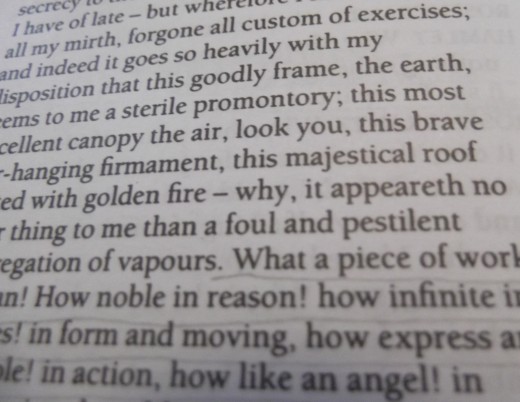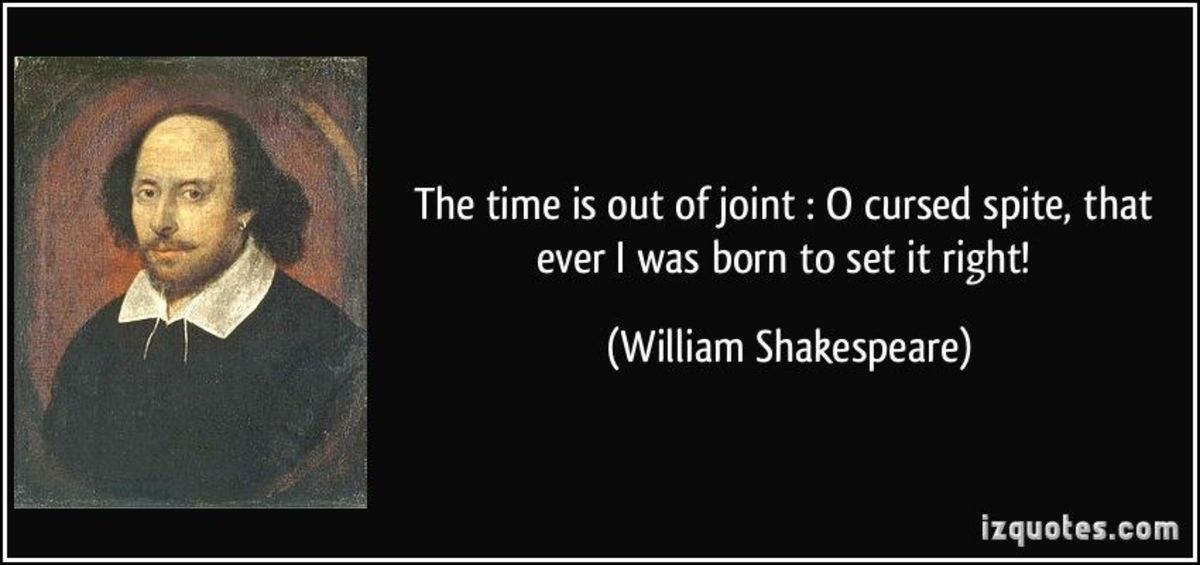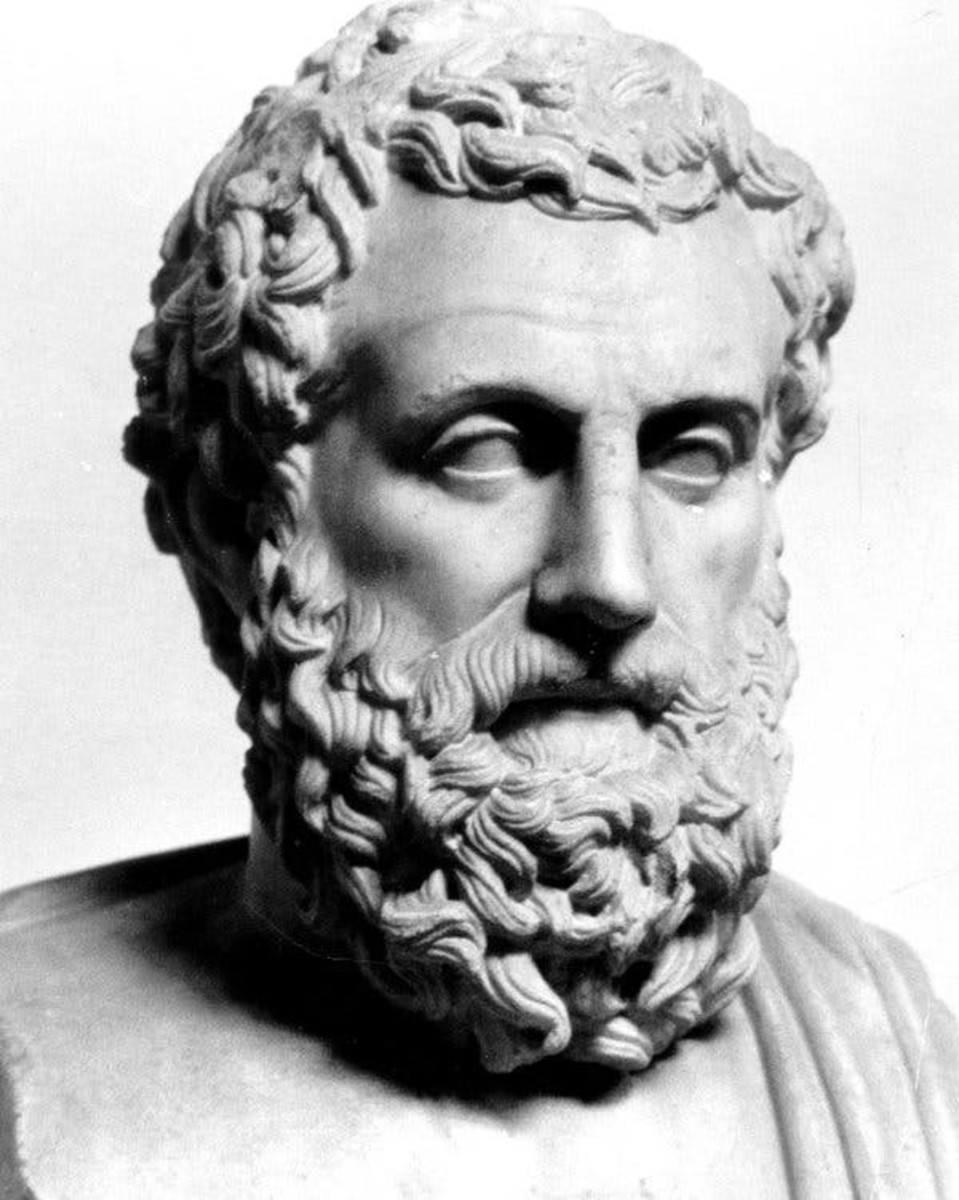Tips For Writing an Academic Essay
What a piece of work is...an essay?

The Very Beginning
The Title
The wording of the title is key to writing a successful paper.
Are you working with a given title or do you have to produce it yourself?
If you have to produce your own title, discuss your ideas with your tutor and literary colleagues.
In either case, read around your subject.
Seek out authorities and write out every thought that occurs to you on your subject. Outline how each idea might progress into an essay topic. Express the ideas that enthuse you ( a valid method of selecting a topic) in a title, which is often a way of pinpointing a workable argument.
Consider the following question:
Is the Shakespeare play, Hamlet, a tragedy or a satire? Discuss.
Put the reason for your argument into words:
I am pursuing this argument to try to clarify the morass of criticism that surrounds Hamlet, to explore its more obscure meanings and to place it (if possible) in the context of genre.
Identify the topics that are key to your discussion, in this case "Hamlet", "tragedy" and "satire". Define them at the outset of your essay
In my answer, I am going to explore the meanings of “tragedy” and “satire” using definitions laid down by critic Northrop Frye in his book, Anatomy of Criticism. Where relevant, I offer alternative ideas about which genre that Hamlet might fall in to.
Setting out your Referencing Convention
Adhere to the referencing convention required of you, by your college.
In the US, this is likely to be the convention defined by the MLA (Modern Languages Association of America). In the UK, you will use the MHRA (Modern Humanities Research Association) convention.
When you have annotated the source once, the majority of institutions allow you to establish your own convention of referencing whenever you repeat a source. Lay out this convention in the footnote of the essay, for whatever publication. For example:
My convention for further quotations by Shakespeare is as follows (2:2:261-7), that is, Act 2, Scene 2, lines 261 to 267, of the play.
My convention for the citations of Northrop Frye is (AOC, p.67), that is, on page 67 of Anatomy of Criticism.
If you are citing from more than one publication by a particular writer, then make this clear to the reader.
Writing the Introduction
In the Introduction, repeat the question and enunciate the argument more fully. Outline the points you are going to make and the critics you are going to cite.
The Introduction is important since writing it out will give you an idea of the structure of your argument.
Introduction
The events of William Shakespeare's play Hamlet unfurl in such a way that the reader or critic could construe it as a tragedy or a satire. Frye defines a tragic hero as a young person who loses his innocence in favour of bitter experience (AOC, p.220). In Act One, Hamlet learns from the ghost of his dead father that Hamlet's Uncle Claudius, murdered him, and the ghost demands revenge from his son: "Revenge his foul and most unnatural murder" (1:5:29). Hamlet's mother Gertrude has already married Claudius, adding yet more “bitter experience” (AOC, p.220) to young Hamlet’s life. The only way that Hamlet can cope with what is happening to him is to feign madness while he explores the truth of what the ghost has revealed – and question the meaning of his – Hamlet’s – own existence.
Claudius eventually dies, but so does Hamlet's mother Gertrude. In a bid for revenge, Hamlet succeeds in killing courtier Polonius and in a fatal duel with Polonius's son Laertes, dies himself. In addition, his spurned lover Ophelia loses her reason and dies. The final events occur because of the action by Hamlet, killing Polonius when he believed that he was killing Claudius.
This series of events concurs with the Oxford English Dictionary meaning of irony: "an ill-timed or perverse arrival of an event". Irony and ironic events are devices used within a satirical narrative, one that exposes "human folly or vice". In spite of his rage at the death of his father, Hamlet does not balk at killing - he thinks - Claudius, an action that leads to the multiple deaths at the end of the play. In exploring the events of Hamlet, it is essential to refer to events in other Shakespearean plays.
The plot of Shakespeare's tragedy Romeo and Juliet, pivots on a series of ironic and mistimed events, that is, Romeo failing to receive Friar Lawrence's letter in time, and arriving at Juliet's tomb, unaware that she is actually alive. Yet, the multiple deaths in it render the play a tragedy.
From two points of view, Hamlet also contains a strong element of romance. Shakespeare could have portrayed Gertrude as the central character, a queen that loved her husband’s brother so much, that she agrees to the murder of her husband, so that she can marry her lover. Only, her irritating son gets in the way, mooning over his dead father and using a hapless bunch of strolling players to reveal the murderous deed.
The play could have focused on the love that Ophelia has for Hamlet . But she is doomed to die because of the selfishness of her lover: “Get thee to a nunnery” (3:2:121)). At a more facile level, we could argue that Hamlet is a supernatural tale, because a ghost enters the opening scene. But the majority of Shakespeare’s tragedies contain at least one affiliated couple, and the tragic Richard III - subject of Richard III - encounters a ghost, not long before his death. The presence of these elements do not qualify these plays as romances or tales of the supernatural.
I will focus on the argument between tragedy and satire because the opening scene hints at tragedy and the closing scene – as I have pointed out – is filled with irony.
Argument One
Several models exist for structuring the arguments within essays, for example, the PEEL model.
Put simply, PEEL is an acronym for point – evidence – explore – link.
Making use of this model will enable you to structure the essay.
Make a point.
Support it with evidence.
Explore the evidence.
Link the evidence to other instances within the text - or even to other texts. In addition, introduce the material of the following subject.
For example:
Point: According to Northrop Frye, Hamlet is “a tragedy of melancholy as a state in itself rather than imitation of action” (AOC, p.67). The meanings of melancholy include “a pensive sadness" and "a mental depression" (OED). Several of Hamlet’s speeches indicate that he embodies these states of mind.
Example: Hamlet says “ it goes so heavily with my disposition that this goodly frame the earth seems to me a sterile promontory” (2:2:260-3), indicating a "pensive sadness" and: “Man delights not me – nor women neither, though by your smiling you seem to say so” (2:2: 275-76), indicating mental depression.
Explore: Hamlet's speech, in conjunction with his spurning the love of Ophelia “Get thee to a nunnery” (3:2:121) mark Hamlet out as a man subdued in mind. It is through this melancholic lens that he sees the world and everyone in it. His sorrow-filled mind contributes to his slaying of Polonius, thus leading to the play's tragic conclusion.
Link: The character of Laertes also encompasses this “tragedy of melancholy” (AOC, p.67). Laertes declares: “How came he dead? I’ll not be juggled with. To hell, allegiance” (4:4:127-8). He is referring to the murder of his father, Polonius, and vows vengeance on the killer, without trying to find out what really happened. In addition to the father/son murder and vengeance theme, Hamlet’s lover Ophelia, develops a type of depression because of the death of her father “I cannot choose but weep to think they would lay him I’ th’ cold ground” (4:5:67-68). Meanwhile, her lover Hamlet has treated her roughly: “with a look so piteous in purport /As if he had been loosed out of hell” (2:1:82-3). The circumstances pile up against her, and eventually, Queen Gertrude describes how Ophelia annihilates herself by falling “in the weeping brook” (5:2:177).
As Frye insinuates, it is the states of mind of the chief players that render the play a tragedy (AOC, p.67), as much as - or more - as the play's eventual outcome. In themselves, these events are tragic in the compass of that original definition of tragedy by Frye: “a young person who loses his innocence in favour of bitter experience” (AOC, p.220). However, in determining the genre of the play, the reader must consider its course of events.
Argument Two
With all the points enunciating Hamlet as a tragedy, now present the other side of the argument.
Point: It is the summation of its tragic events and their frequency that might pivot Hamlet from the genre of tragedy to that of satire.
Evidence: Frye explains that “Hamlet nearly exterminates the Danish court in his own fall” (AOC, p. 207). This statement carries a degree of irony, since Hamlet set out to avenge the death of one man only. in order to clarify the argument, the reader needs to consider Hamlet's social position, that is, the Prince of Denmark.
Explore: In his book, Frye explores the “wheel of fortune” (AOC, p.207) that many tragic heroes find themselves upon. Frye argues that the majority of people live at ground level, with the Deity in the heavens and the hero mid-way between. Frye metaphorises this mid-point as a wheel that revolves inexorably. Heroes, he points out, fall when at the apex or highest point of this wheel, possibly because of exposure to what Frye defines as “divine lightening” (AOC, p.210-211.) As Frye explains, the hero is all at once more gifted and more vulnerable than the majority of characters that fill the narrative (AOC, p.208). By birth, Hamlet is exposed to censure because he is the son of a King. When he suspects that his father has been murdered "All is not well:/ I doubt some foul play" (1:2:254-4), Hamlet decides to "sweep to my revenge" (1:5:31); As Frye puts it, Hamlet “forfeits his high esteem” and “accepts the “logic of revenge”. (AOC, p. 212). In summary, Hamlet is prepared to sacrifice the status bestowed upon him by birth and stoop to committing murder, which is exactly what King Claudius, formerly a prince, has done.
Link: Adam in John Milton's epic poem Paradise Lost, is exposed to this same high status, his direct contact with God and divine expectations of infallible behaviour. It is Hamlet's state of mind and his loss of esteem, as much as loss of life and lives, that renders the play a tragedy. However, Northrop Frye presents another argument that may define the genre of the play.
Argument Three
Point: Frye writes: “tragic irony differs from satire in that there is no attempt to make fun of the character but only to bring out clearly the “all too human” as distinct from heroic aspects of the tragedy” (AOC, p. 237).
Evidence: Hamlet is not a hero out on a great quest, but a bereaved human who feels bound to seek revenge. In his consternation during the argument with his mother, it is unsurprising that he commits a terrible error in killing Polonius. Hamlet is not the only character to fail to see reason following the death of a family member. Overall, Hamlet is a play filled with angry, grieving humanity.
Explore: Laertes behaviour, that is, vowing vengeance upon the killer of his father, is a repetition of Hamlet's frame of mind. Ophelia, Gertrude and Horatio react in very human ways to the tragic events that surround them. When Hamlet is accusing Gertrude of behaving badly, she says: "Hamlet, you have thy father much offended" (3:4:8). On the death of his friend, Horatio declares: "Goodnight sweet prince, And flights of angels sing thee to thy rest" (5:2:351-2).
Link: In considering the above three arguments, I place Hamlet in the genre of tragic irony, using Northrop Frye's definition (AOC, p. 237)..
Conclusion
A strong conclusion is essential. Include a summation of what you have written before you arrive at your final assertion.
In my first argument, I concluded that Hamlet is as much a "tragedy of melancholy " rather than a play about action” (AOC, p.67). In consideration of my second argument, I ruled out Hamlet as a satirical play, because of Hamlet's social status, and Shakespeare's treatment as a tragic, classical hero. In my third argument, I explored Frye's meaning of "tragic irony" (AOC, p. 237) and I conclude that Hamlet could occupy this genre.
Do not forget to add a list of sources. In a "real" academic essay, this list will be much longer. Again, use the convention as directed by your institution.
Bibliography
(primary source) Hamlet by William Shakespeare
(secondary source)
Frye, Northrop, Anatomy of Criticism: Four Essays (Princeton: Princeton University Press, 1957)
Finally....
Check your text for grammar and spelling errors before handing the essay in.
Be aware that you will not get extra marks for perfect grammar; the examiners expect you to know the conventions.
But the majority of institutions dock marks for grammatical errors.
Certain errors can even change the meaning of what you are expressing.
Get a friend with an editorial eye to proof-read the paper before submission, if possible.
Good luck.






